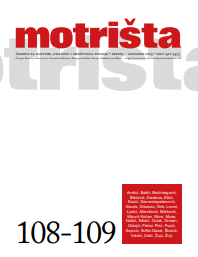
Kronika kulturnih događanja u Mostaru, srpanj - rujan 2019.
Mostar Cultural Events, July - September 2019.
More...We kindly inform you that, as long as the subject affiliation of our 300.000+ articles is in progress, you might get unsufficient or no results on your third level or second level search. In this case, please broaden your search criteria.

Mostar Cultural Events, July - September 2019.
More...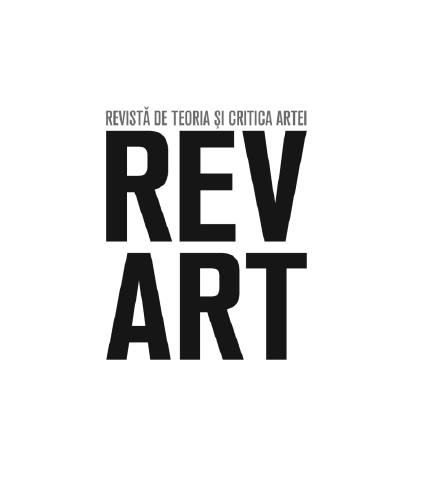
In the current socio-cultural background, we can feel an ever-growing enlargement of the range of tools one has available for engaging the demands and the reality of the modern world. Neurodidactics comprises the understanding of behavioural, emotional and cognitive manifestations. It is, therefore, one of the tools through which we try to attract all of the beneficial results attributed to neurosciences, in order to postulate them and to involve them in the didactic teaching and learning processes. This interdisciplinary area therefore attempts to establish some principles and solutions for more efficient means of teaching and learning, which are based on the studies of neurosciences.A brief incursion in this interdisciplinary domain – a concise analysis of its basic principles, of the canons postulated by various specialists in this field is therefore necessary as long as the benefits brought forth by this area of study in the teaching and learning processes have proven to be ever more efficient.
More...
Comunitatea ortodoxă sârbă din Banat se mândrește cu o lungă și bogată tradiție a cântului bisericesc, transmisă din generație în generație atât prin cântarea de strană, cât și prin activitatea de aproape două secole a corurilor bisericești. Eliberarea Banatului de sub dominație otomană în anul 1716 a determinat, printre altele, o revigorare a vieții bisericești și implicit, a serviciului religios sub toate aspectele sale. În prima parte a lucrării este descrisă evoluția muzicii bisericești sârbe din punct de vedere al cântului propriu-zis (al melodiilor cântate în cadrul serviciilor religioase) – atât a celui de strană cât și a celui coral. În continuare este expusă evoluția istorică a celor două componente ale cântului bisericesc, cu referire la diverse aspecte legate de acestea (modalitatea de învățare a cântului, grija autorităților bisericești de a asigura personal calificat, muzica corală ca fenomen de masă, etc.). Sunt evidențiați principalii exponenți ai cântului bisericesc al sârbilor din Banatul Românesc – cantori, profesori de cântări, melografi, dirijori, coruri. Concluziile lucrării sunt prezentate din perspectiva stării actuale a celor două componente.
More...
The article proposes to the reader a brief foray into the dawn of Christianity, focusing on the particularity of church music since then. Understanding the formation of Christian church music. Understanding church music from then on is extremely important for the study of its entire course afterwards when we want to approach its interpretation.
More...
Nota de originalitate a Sfântului Roman în imnografia bizantină o constituie dialogul, mai exact, adaptarea dialogului la genul poetic, întrepătrunderea perfectă dintre genul dramatic și cel liric. Sfântul Roman reușește să păstreze aceeași metrică, același număr de silabe, același refren, chiar dacă personajele sale vorbesc între ele. De asemenea, condacul ne propune să inițiem un dialog cu Dumnezeu, dar și să-L ascultăm pe Dumnezeu, Care ne vorbește mereu. Condacul rămâne, axul, punctul de sprijin pentru întreaga imnografie bizantină, un gen deosebit de complex, cel mai complex, deosebit de bogat în conținut teologic, de mari dimensiuni, un gen care a inspirat tot ceea ce a urmat după el.
More...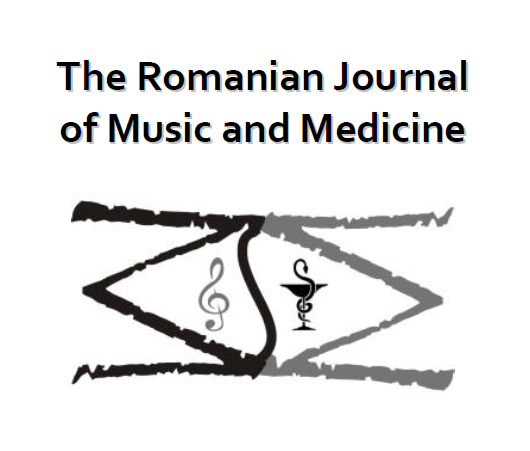
This paper intends to bring forward the views about the musical art formulated by Arthur Schopenhauer. The 20th century philosopher’s The World as Will and Representation offers valuable opinions about the place of music in relation to the other arts, as well as many statements which cluster around two positions: 1. sonorous art as a manifestation of Will, and 2. music and nature (from the perspective of the World as representation) seen as a pair sharing certain parallel features. Schopenhauer’s views are interesting in understanding the Romantic cultural context, but also as principles through which music becomes a model for discovering the world through the capacity of the sonorous art to reflect unconscious essences of reality (as universal language).
More...
Vibration healing is an alternative therapy involving the use of a mechanical vibration, administered through specialized equipment, to treat certain health problems or injuries. Also known as vibrational therapy, vibration healing is used in a variety of health-care settings. If parts of the body become unbalanced, they may be healed through projecting the proper and correct frequencies back into the body. As it is well known, everything in this universe is energy. Energy fields, which make up all living things, have the ability to influence the vibrational energy of another energy field. This is called resonance, and vibrational therapy is based on energy resonance. In Romania, the researcher Petre Dumitru created a device called Energostar, for the purpose to heal patients through the vibrational therapy.
More...
Muzica este arta cea mai apropiată sufletului omenesc, fiind prezentă în conştiinţa şi natura omului, dar şi în viaţa cotideană, ca element inerent în viaţa societăţii. Ea a fost definită ca „arta de a exprima frumosul prin sunete” sau „arta de a exprima emoţii şi sentimente cu ajutorul sunetelor, combinate într-o manieră specifică” sau aşa cum zicea Platon: „muzica oferă un suflet universului, aripi minţii, zbor imaginaţiei şi viaţă oricui”.
More...
Due to the specificity of neuronal activity in contact with listening to or playing music, it appears that musicians might use often simultaneously both hemispheres of the brain compared to other people. The occurrence of these types of dynamic neural maps results in many benefits for the development of one’s personality by practicing music, which can be found at the intellectual, emotional, motivational and relational level. The implicit activation of several cortical areas that process complicated various pieces of information in the same time and enable the use of these cortical patterns in other activity areas, are transformed into advantages that ensure superior performances, such as problem solving, management, planning, strategies, detail analysis.Keywords: musical instrument, cognitive benefits, cerebral hemispheres, cortical maps
More...
Cântăreții, ca şi orice altă categorie profesională, pot prezenta afecțiuni specifice, legate de locul de muncă şi modul de viață. Bolile specifice cântăreților includ afecțiuni vocale, afecțiuni respiratorii şi scăderea de auz de tip trauma sonoră. O parte din aceste afecțiuni sunt menționate în legislația actuală de medicina muncii, ca fiind boli profesionale cu declarare obligatorie. Persoanele care se folosesc de vocea lor în profesie suferă adesea de dureri în gât, iar uneori își pot pierde și vocea. Tratamentul poate fi, în cazul unei infecții cu bacterii, administrarea de antibiotice, un antrenament de vorbire în caz de utilizare greșită a vocii sau o procedură operativă în cazul afecțiunilor polipilor vocali.Pentru a monitoriza starea aparatului vocal, este necesar să se efectueze periodic examinări fonice; fiecare cântăreț ar trebui să cunoască regulile de bază ale igienei.
More...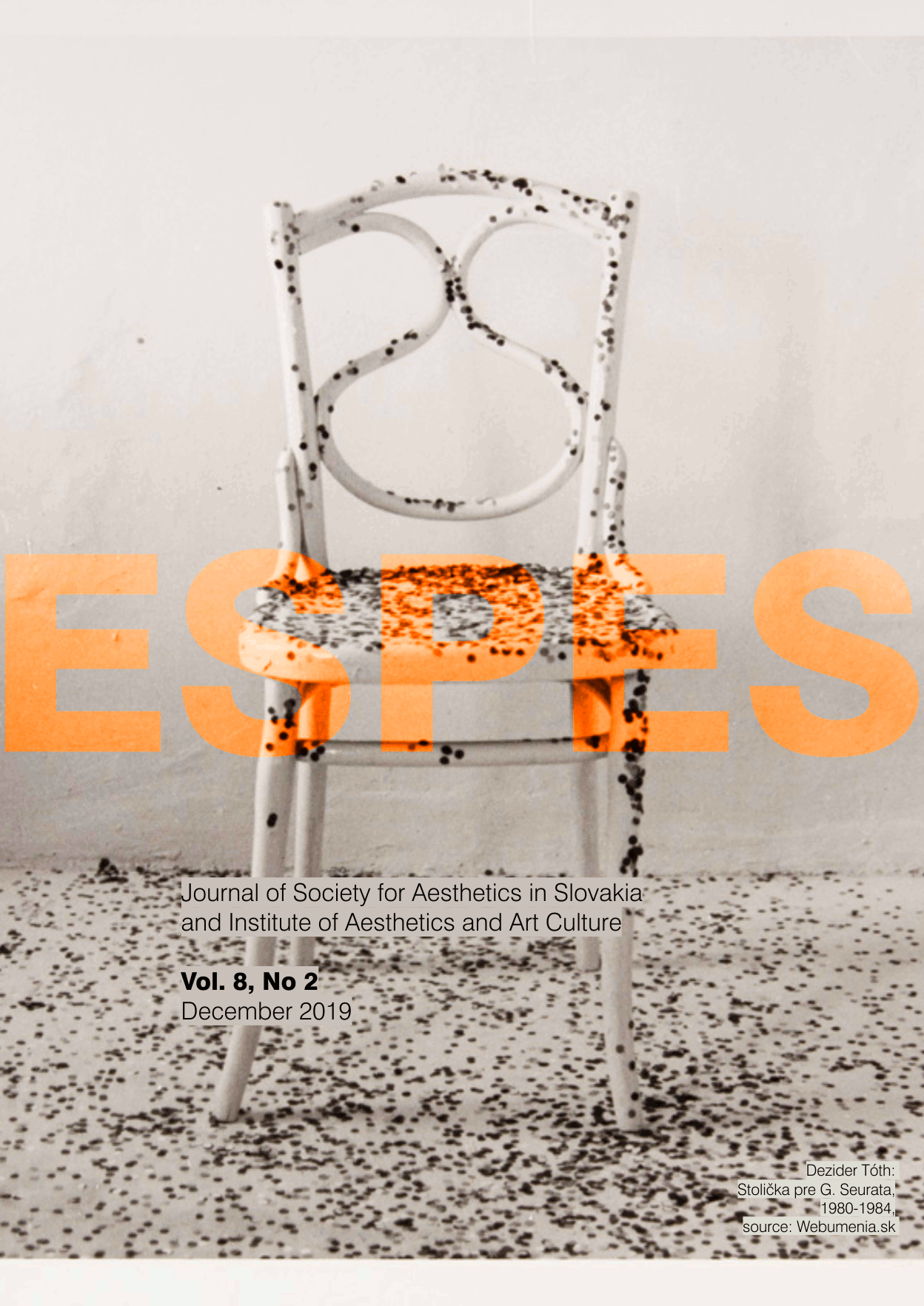
In this paper, I investigate one popular view in current methodological debate about musical ontology, namely, descriptivism. According to descriptivism, the task of musical ontology is to offer a description of the ‘structure of our thought’ (Kania 2008: 437) about musical works, as it manifests itself in actual musical practices. In this regard, descriptivists often appeal to our pre-theoretical intuitions to ground ontological theories of musical works.This practice, however, is worrisome, as such intuitions are unstable and contradictory. For example, there is a broad variety of intuitions in our musical practice concerning what counts as an authentic performance of a musical work. All such intuitions reflect at least a part of actual practice; however, they are in conflict with each other. This raises a problem, for how can they thus represent a reliable basis for our ontology? A further worry for descriptivism concerns the triviality of the knowledge it gives us access to. If, according to descriptivism, the task of musical ontologists is simply to codify the regularities found in our intuitive thought or discourse about practice, then how can the resulting theories be informative at all with regard to the object of their concern?
More...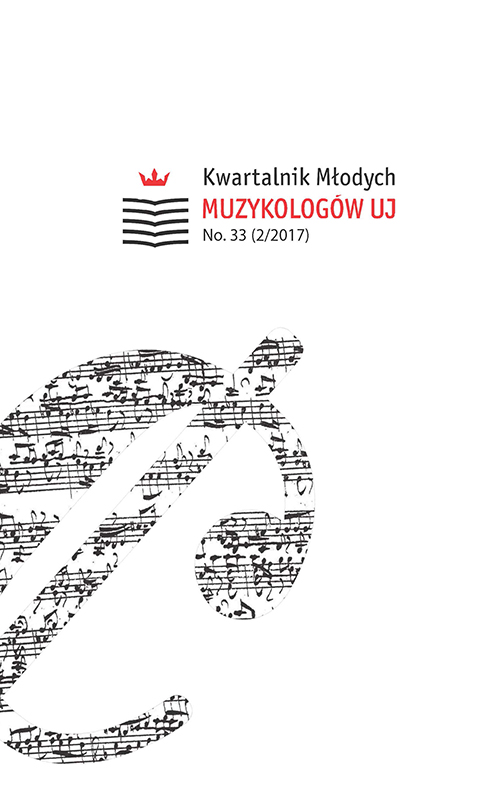
The article focuses on the background of Hieronim Feicht’s Requiem, which was written during World War II. The main aspect of it is to present main thoughts on mass settings composed by Feicht and to give basic information about their performances given by the choir of theological seminary students of the Congregation of the Mission in Kraków-Stradom. Many of extant documents provide us with precise knowledge about the repertoire and solemnities during which it was sung. Except for performances, the article presents the praxis of performing requiem masses in the first half of the 20th century. Taking this context into consideration, the author presents a brief analysis of the Feicht’s requiem mass setting.
More...
Since the middle of the 20th century, electro-acoustic music has become very important in the contemporary music landscape. Electronic elements have forced researchers focused on electro-acoustic music to develop analytical methods. Pierre Schaeffer was a pioneer in systematization of new sounds. His achievements in this area are fundamental, serving nowadays as a reference point for dynamically developing new concepts of electro-acoustic music analysis. The popularization of Pierre Schaeffer’s method in Poland began with Włodzimierz Kotoński who partially translated Traité des objets musicaux into Polish. In his Traité, Pierre Schaeffer coined one of the most important terms, i.e. a sound object, which is a unit of electro-acoustic music. A sound object is related to reduced listening and is purely perception-oriented. By using a sound object in the context of music, the composer creates a music object. Schaeffer’s goal in creating an analytical method was to design a new language which could be used in a discussion of “non-classical” sounds. In 1966 Schaeffer introduced his PROGREMU Programme de la Recherche Musicale, which covers the following five stages of musical research: typology, morphology, characterology, analysis, synthesis. In typology and morphology sound objects are isolated from the context, then classified and described—it is a detailed stage of unit systematization. In the next step, sounds are grouped in genres according to their character. Sound objects are analyzed and specified in their musical context. With this information, the composer can make a new musical object. Each stage has its specific function; however, musical composition maintains its primary role. Schaeffer’s method is dynamic in character and it is constantly developed because of new sounds.
More...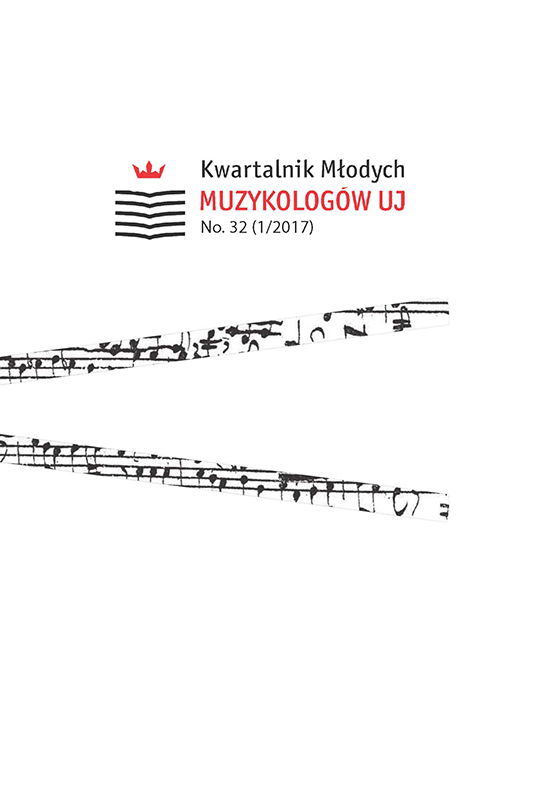
The role of Jane Wilhelmina Stirling in Fryderyk Chopin’s life as well as in preserving his legacy is nowadays underestimated. Jane Stirling was not only Chopin’s pupil, but also his patron. She organized a concert tour to England and Scotland for him and tried to support the composer financially. Moreover, she defrayed the costs of the composer’s funeral and erecting his gravestone. After his death, she focused on what Chopin had left passing away. It is thought that she purchased most of the items from his last apartment; she acquired also the last piano the composer had played. She tried to protect the autograph manuscripts he had left, and attempted to arrange the publication of compositions that had been retained only in a sketch form.
More...
The article is a pioneer attempt in Polish literature to develop a synthetic resume and the characteristics of the work of the Italian Baroque composer Leone Leoni. Leoni was highly valued in his time; also, he is said to be one of the creators of dramma per musicagenre, and his religious compositions served as model examples of counterpoint for many centuries. The first part of the text presents the state of research concerning the life and work of the artist; then, the second part contains his biography. The last part discusses Leoni’s works. Finally, the rank of his output is regarded.
More...
The main topic of the article is II Sinfonia Olimpica by Zbigniew Turski, a composer who is barely known in Poland nowadays. The reason of this is the socio-political situation of the country after World War II. The composer was one of first victims of Stalinist cultural policy. At a conference in Łagów Lubuski in 1949, his II Sinfonia Olimpicawas named formalistic, pessimistic and incompatible with the socialist realism standards. However, the composition had won a gold medal at the XIV Olympic Games in London in 1948 and this success had had a great resonance in Polish music press before the conference. The article has several objectives. The first of them is to present socio-political situation in musical environment. Moreover, it shows the reception of the symphony after its premiere at the conference in Łagów Lubuski. Finally, an attempt to analyze the II Sinfonia Olimpica is made. It is noticed that the symphony stands out against other compositions created in the mid-twentieth century particularly by dint of its deeply emotional and dramatic character. The achieved mood results from traumatic war experience of the composer. Although the neoclassical tradition is visible, Turski used the innovative musical language and his attempt to create his own music style is noticeable. According to the author’s opinion, if it had not been socialist realism in the mid-twentieth century, II Sinfonia Olimpica could be now perceived as one of the most important symphonies created within the last century in Poland.
More...
The Julio Estrada’s output is still the unexplored area, what creates the opportunity to study the phenomenon called discontinuum-continuum. During the last 36 years of the creative activity, Estrada has developed several aspects of the macro timbre that integrate several compounds of a composition. In his research, Estrada confronts two different situations in the compositional process: continuous transformation of the sound and chronographical method, using strictly defined recording process in order to receive three-dimensional movements of the sound in the topological order. As a result of existing these two situations, a musical work is impossible to be defined by one technique or musical style. Examination of the theory of composition called discontinuum-continuum allows one to understand a new methodology of musical creation that involves scientific research of the physical phenomenon of sound and introspection of the imagination of the sound.
More...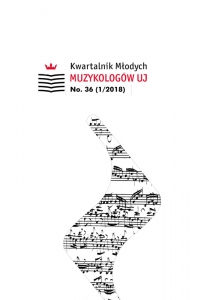
Piotr Hertel (1936–2010)—a composer of film, theatrical and stage music (among others the hit Parasolka to words of Janusz Słowikowski). He is the author of music for numerous cartoons made in the animation studio Se-Ma-For in Łódź, including soundtracks for egendary TV series Miś Uszatek and Plastusiowy pamiętnik. The aim of the article is to characterize music composed by Hertel for the above-mentioned as well as several other movies in the context of his views on the role of music in cartoons and his compositional technique. The broader knowledge on this topic was gained thanks to the interview made with the members of Hertel’s family: his wife Jadwiga and son Michał.
More...
The present article constitutes an introduction to the artistic profile of Austrian composer and piano virtuoso Joseph Woelfl. This forgotten creative personality left an artistic legacy of instrumental music, stage works, numerous orchestral compositions, piano concertos, a concerto for piano and violin, and a chamber concerto. Beyond this, he wrote numerous other chamber works scored for various ensembles; but above all, he created an array of works for solo piano or two pianos, as well as piano pieces of pedagogical character.The artist was born on 24 December 1773 in Salzburg, where he began his musical education. In 1790, he left his hometown of Salzburg and, probably following in Wolfgang Amadeus Mozart’s footsteps, set out for Vienna. He did not remain there long, however, because in 1791, he was accepted for service to Prince Michał Kleofas Ogiński in Warsaw. The pianist-composer returned to Vienna probably ca 1795. He set out on his next conquest of European cities in 1799. This period of tours lasted until 1801. At this time he visited, among other cities, Prague, Leipzig, Berlin, Hamburg and Dresden. In 1801, he arrived in Paris, where he spent the next four years of his life. In 1805, he left the French capital and set out for London, where he remained until his death. He passed away on 21 May 1812.In his intensive artistic career, Joseph Woelfl devoted himself mainly to piano performance and composition; beyond this, he also engaged in pedagogical activity. His abundant artistic output is nearly forgotten today, so it is worthwhile to remind a broader audience of this distinguished figure.
More...
This essay aims at discussing the problem of Felix Mendelssohn’s attitude towards different religions shown in his choral piece Responsorium et Hymnus Op. 121 for male choir with cello and double bass. Considering the arguments concerning composer’s self-identity provided by Jeffrey Sposato, we could interpret the Lutheran chorale appearing at the end of this Catholic liturgical work as means by which Mendelssohn tried to manifest his Lutheran faith and therefore to criticize Catholicism.However, if we examine more carefully the very end of this composition, we would find that the musical material, characteristic for each faith, form a dialectical and dynamic relation. It seems that—instead of criticizing Catholicism—Felix showed the possibility and the necessity of different faiths to coexist, which, according to the idea of religious pluralism and tolerance proposed by composer’s grandfather, Moses Mendelssohn, is the only way to discover religious truth. At the end of this paper, I would like to propose that the reception history of Felix Mendelssohn’s work and life from the post-Wagnerian and anti-semitic criticism to so-called Mendelssohn Renaissance in the second half of 20th century also went through a dialectic course. We cannot fully understand and interpret them without taking a multi-aspect view.
More...